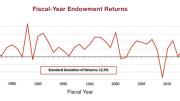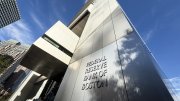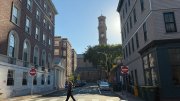The University’s endowment—its largest revenue source by far—was valued at $37.6 billion as of June 30, 2015 (the end of that fiscal year, and the most recent reporting date). In nominal terms, not adjusted for inflation, that was an important milestone: the endowment at last exceeded the prior peak value of $36.9 billion reported at the end of fiscal 2008, just before the financial crisis.
But early indications are that the fiscal 2015 results, propelled by a 5.8 percent return on invested assets that year, may not be sustained—a result that matters enormously, because distributions from the endowment provided nearly 36 percent of Harvard’s operating revenue in that year: $1.6 billion of $4.5 billion. That contribution dwarfs the second- and third-largest revenue sources: student tuition and fees (20 percent); and external support for research, from the government, corporations, and foundations (18 percent).
In fact, if investment returns are as weak as some recent reports suggest (see “The Outlook,” below), it is conceivable that the value of the endowment could have decreased during fiscal 2016 (results are typically reported in September). Such an outcome might seem counterintuitive as Harvard successfully pursues the largest capital campaign in higher-education history—but it would clearly demonstrate the continuing constraints on the University’s economic model.
Endowment Arithmetic
The size of the endowment, and thus of the annual distributions authorized by the Corporation to fund University operations (typically, 4.5 percent to 5 percent of the market value as of the beginning of the fiscal year), depend on the cumulative effects of:
- returns on invested assets (rounded, $2.0 billion in fiscal 2015), plus
- gifts for capital received during the year (about $0.3 billion) and changes in pledge balances (about $0.6 billion), minus
- distributions to fund University operations (the $1.6 billion cited above).
Thus, from the fiscal year-end value in 2014 ($36.4 billion), the endowment
- increased by $2.0 billion from realized and unrealized investment gains;
- increased by $0.9 billion from gifts received and pledges for future gifts; and
- decreased by the $1.6 billion distributed for Harvard’s budgeted operations,
resulting in a (rounded) appreciation of $1.2 billion for fiscal 2015.
The University obviously continues to pursue The Harvard Campaign robustly—but even as it raises $6.5 billion (and likely well beyond), the aggregate effect on the size of the endowment is relatively limited. Many gifts are for current use, not for investing alongside existing endowment assets. Others are earmarked to pay for capital projects (think the Business School’s recent Chao Center and Klarman Hall buildings), and so are not endowed, either. Finally, even the gifts intended to be endowed are, in many cases, not received immediately; rather, they are paid to Harvard over several years (hence, those large pledge balances).
The driving factors in the size of the endowment, therefore, are investment returns and distributions. Currently, each 1 percent of investment returns (net of investment expenses) represents $370 million—and each 1 percent of distributions for Harvard operating revenue represents a like amount. In fiscal 2015, the 5.8 percent rate of return represented nearly $2.0 billion in investment gains; in the prior year, the 15.4 percent rate of return (on a smaller base of assets) produced $4.7 billion—a one-year gain in the University's wealth almost equivalent to the effect of a multiyear capital campaign. Accordingly, after distributions and gifts, the 5.8 percent return in fiscal 2015 resulted in a 3.3 percent appreciation in the value of the endowment; in fiscal 2014, the 15.4 percent return contributed significantly to the 11.3 percent ($3.7 billion) rise in the endowment’s value for the year.
The Outlook
Unfortunately, the prospects are nowhere near so promising for the fiscal year ended this past June 30. For investors in general, markets have been difficult, as the early results from a pair of asset managers indicate.
The enormous California Public Employees’ Retirement System (CalPERS) reported preliminary fiscal 2016 returns of 0.61 percent. Its $300-billion portfolio differs from the endowment and other assets invested by Harvard Management Company (HMC), but the directional signal is useful: in the preceding fiscal years, CalPERS reported returns of 2.4 percent (2015; Harvard 5.8 percent); 18.4 percent (2014; Harvard 15.4 percent); and 12.5 percent (2013; Harvard 11.3 percent). For fiscal 2016, CalPERS noted very strong returns on fixed-income investments (9.29 percent) and real-estate and infrastructure assets (7.06 percent and 8.98 percent)—but losses on public equities and forest land, and only nominally positive returns (1.70 percent) on private equities. (Real-estate and private-equities figures are based on March 31 valuations).
Both private equities and real estate loom large in HMC’s forthcoming results. In the new asset-allocation model that HMC unveiled last year (discussed further in a conversation with then president and CEO Stephen Blyth), the fiscal 2016 asset allocations for those two categories were, respectively, 13 percent to 23 percent, and 10 percent to 17 percent. Those assets have traditionally provided higher returns than public securities, and their performance may be especially significant this year because it is possible that Harvard did not capture those relatively lush fixed-income returns, in a year when low interest rates surprisingly dropped even further. HMC’s fiscal 2016 commitments to high-yield bonds (0 percent to 3 percent), domestic bonds (5 percent to 9 percent), and foreign bonds (0 percent to 4 percent) reflected a bearish outlook for the fixed-income sector.
The Massachusetts Pension Reserves Investment Management Board publishes performance data monthly. Its May update shows fiscal 2016-to-date returns of 1.3 percent; the accompanying detailed data portray generally positive fixed-income, private-equity, and real-estate returns, but losses for most stock markets (particularly international and emerging-market equities), and losses for the most widely followed hedge-fund (“absolute-return” in HMC’s terminology) indicator. Absolute-return investments were targeted for 11 percent to 21 percent of HMC’s fiscal 2016 asset allocation, the second-highest class after private equity.
If HMC’s investment results during fiscal 2016 turn out to be in this low-single-digit range, endowment distributions of perhaps $1.7 billion could more than offset both the appreciation and gifts and pledges, causing the net value of the endowment to fall. An unchanged endowment value might be seen as a victory in a very challenging environment.
In Prospect
As noted, the Harvard fundraising campaign is securing bountiful gifts. Deans cannot but be grateful for the campaign-based stimulus to unrestricted, current-use giving (more than $400 million in each of the past two fiscal years—about 10 percent of University operating revenue). The major building projects under way have enjoyed significant donor support: the business school’s Chao and Klarman facilities, as well as the Faculty of Arts and Sciences’ (FAS) $1.4-billion undergraduate House renewal program, which had logged gifts and pledges totaling $230 million as of March 31, according to a recent report. (Before that largess arrived, however, FAS jump-started House renewal by decapitalizing—withdrawing—funds from its endowment, perhaps equal to or even more than the philanthropic support received.)
Nonetheless, an as-yet unreported sum has been received to bolster the endowment, including: the $350-million gift to support public health; a $150-million pledge principally for undergraduate financial aid (and others for the same purpose); the $400 million that will underwrite engineering and applied sciences; and gifts for multiple professorships and endowments for individual chairs (now probably totaling at least a few hundred million dollars). One effect of the campaign shows up in the annual disclosure of pledges receivable in coming years: $2.2 billion as of the end of fiscal 2015, up from $1.6 billion a year earlier. Not all are for the endowment, but large sums will surely end up there.
The fact remains that returns on the endowment investments are the critical figure for the University’s and the schools’ near-term finances. As the annual financial report blandly puts it:
The endowment distribution is based on presumptive guidance from a formula that is intended to provide budgetary stability by smoothing the impact of annual investment gains and losses. The formula’s inputs reflect expectations about long-term returns and inflation rates.
In the terms that matter to deans and their faculties, years when returns are low reduce subsequent endowment distributions—the dollars they can spend. In the current fiscal year, budgets assumed a 3 percent to 4 percent increase in the dollars distributed from the endowment for operating expenses. The 5.8 percent return on investments in fiscal 2015 trailed the targeted return (which exceeds the distribution rate so as to preserve the future spending power of the endowment). A fiscal 2016 return that low, or lower, would presumably extend a period of restrained distributions authorized by the Corporation.
Nor are current market conditions the only factor the Corporation must consider. As reported, HMC is in the midst of a significant overhaul of its investment-management processes and asset allocations, personnel, and relationships with external managers—all intended to boost investment returns. In the midst of that overhaul, as reported, its helmsman, Stephen Blyth, went on leave effective late last May. The unsettled state of HMC’s leadership has now been extended, given the surprise announcement on July 27 that Blyth has resigned his management positions effective immediately, and that a search firm has been retained to identify his successor.
The turnover—from Jane L. Mendillo to Blyth to chief operating officer Robert A. Ettl (who has been and remains interim CEO) and then to a new CEO—may make it harder to build those external relationships. And of course Harvard donors, who like to know that their perpetual gifts for endowment are being entrusted to good hands, may have more questions for University fundraisers.
These uncertainties arise as the University’s financial position is being buoyed in important ways: the fruits of the capital campaign; relatively favorable tuition trends in the past few years; and the recent increase in the budget of the National Institutes of Health (NIH)—a goal fervently pursued by President Drew Faust and her peers at other universities. NIH grants are Harvard’s largest source of sponsored-research funding; the institutes’ increased grant-making capacity can be expected to benefit researchers here, and at many other research institutions.
But those trends are tempered by Harvard’s budget needs, its current and planned investments (House renewal; the $1-billion science and engineering complex in Allston), and the expectation that tuition cannot rise indefinitely at rates significantly above general inflation and growth in family incomes.
Looming over all these cross-cutting factors is the current and prospective performance of the endowment investments—today and for the foreseeable future, the driving factor in Harvard’s finances.
(Background data on fiscal 2014 and 2015 performance are presented in the University’s annual financial report; its letter from Harvard Management Company provides an exhibit on the fiscal 2016 asset classes.)









